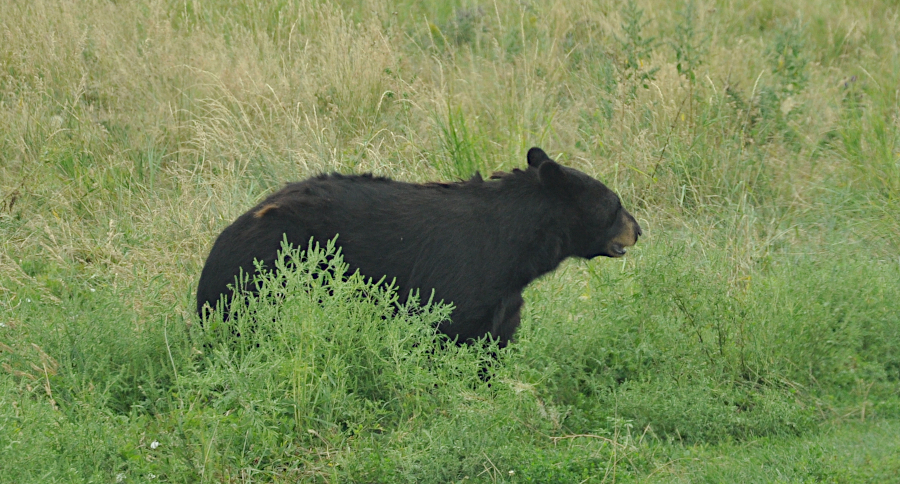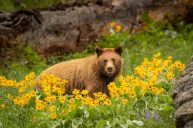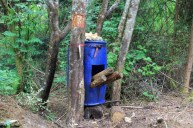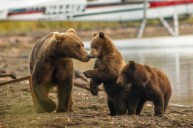Here are some tips to help fill your spring bear tag this year.
As winter loses her icy grip and makes way for warmer weather, it's also time for spring bear hunting season in many states. The bruins are up and about, actively feeding after their long winter slumber.
If you've still got some winter blues and are depressed about the other big game hunting seasons ending, this kind of spring hunt is a good way to get over it.
Today we'll give you some spring bear hunting tips for both baiting and spot and stalking that will help you successfully fill a tag this year.
Be sure to visit walmart.com for all of your hunting needs.
Bear behavior in the spring
The good thing about hunting bruins early in the year is that they are usually quite predictable. Whether it's spotting and stalking grizzly bear in Alaska or sitting over bear bait in Ontario, most bruins are hungry and looking for food when they come out of hibernation. Remember that during that long period of inactivity, they lose a great deal of their body weight.
During the earliest part of the spring, bears will be focused on greener food sources. Many people don't realize that bears don't defecate during hibernation. They form, for lack of a better term, a "poop plug" in their intestine where the feces builds up for months.
When spring comes, the bear relieves this plug and then gets to feeding on grass, skunk cabbage, fruits and other plants. It's thought that eating these helps the bear transition back into their regular omnivorous diets. You'll know this kind of scat from the early part of spring when you see it. It often has a green and sometimes greasy appearance from all the grasses. Remember that bears are omnivores. They'll eat just about anything. Once they've had their fill of grasses, they'll start feeding on nuts, berries and emerging spring insects. They'll also start taking advantage of any leftover carrion from animals that died during the winter months.
In short, food should be your primary focus for spring bear seasons in North America. Remember that they aren't always going to be hunting for their food either. We'll touch more on this later with some of our other tips.
Spot and stalk spring bear hunting tips
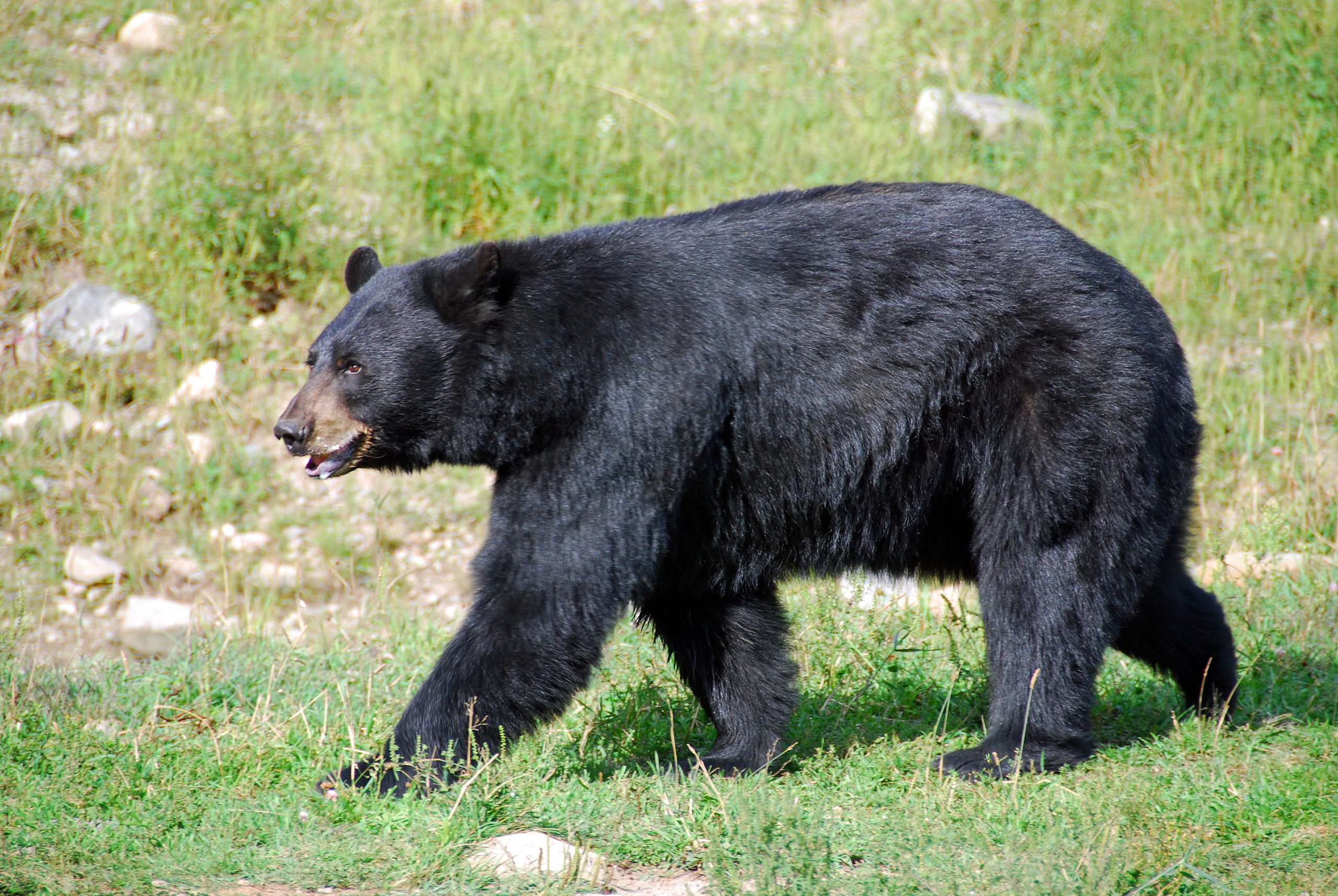
If you're hunting in high mountain bear country, you'll ideally want to look for bruins below the snowline. There's some debate among bear hunters on whether you should focus on north or south-facing slopes. For simplicity's sake, we'd say to just focus on wherever green grass is found. The greenest slopes are generally going to concentrate big bears.
You're going to spend most of your time glassing, so make sure you've got good optics on hand. You will also need a quality pair of hiking boots to get you to the high vantage points necessary and to traverse the miles of terrain you will need to cover to find an animal. Make sure to do some physical training of some kind before your trip. The hiking and stalking will likely be more difficult than you realize.
If your hunt is taking place outside of your home state, it's not a bad idea to hire an outfitter. Partly to help narrow down the areas the bears are utilizing, but also to assist with animal identification. For instance, if you're hunting a state with both grizzlies and black bears, having a second opinion confirm you have the right species before the shot never hurts, especially if you've never hunted bears before.
Another thing to consider for a backcountry hunt is some predator calls. Assuming the bears are nearly done with their grass feast, they might be enticed by the idea of an easy, high-protein meal. Try a fawn or elk calf distress call on a hard-to-approach bruin and you might be able to get them to come to you. Don't discount a simple wounded rabbit call like you might use for coyotes or bobcats either. Bears aren't too picky. An easy meal is an easy meal to them. Sometimes you just can't get quite close enough for a shot and a good call will help you close the distance.
Bear baiting tips
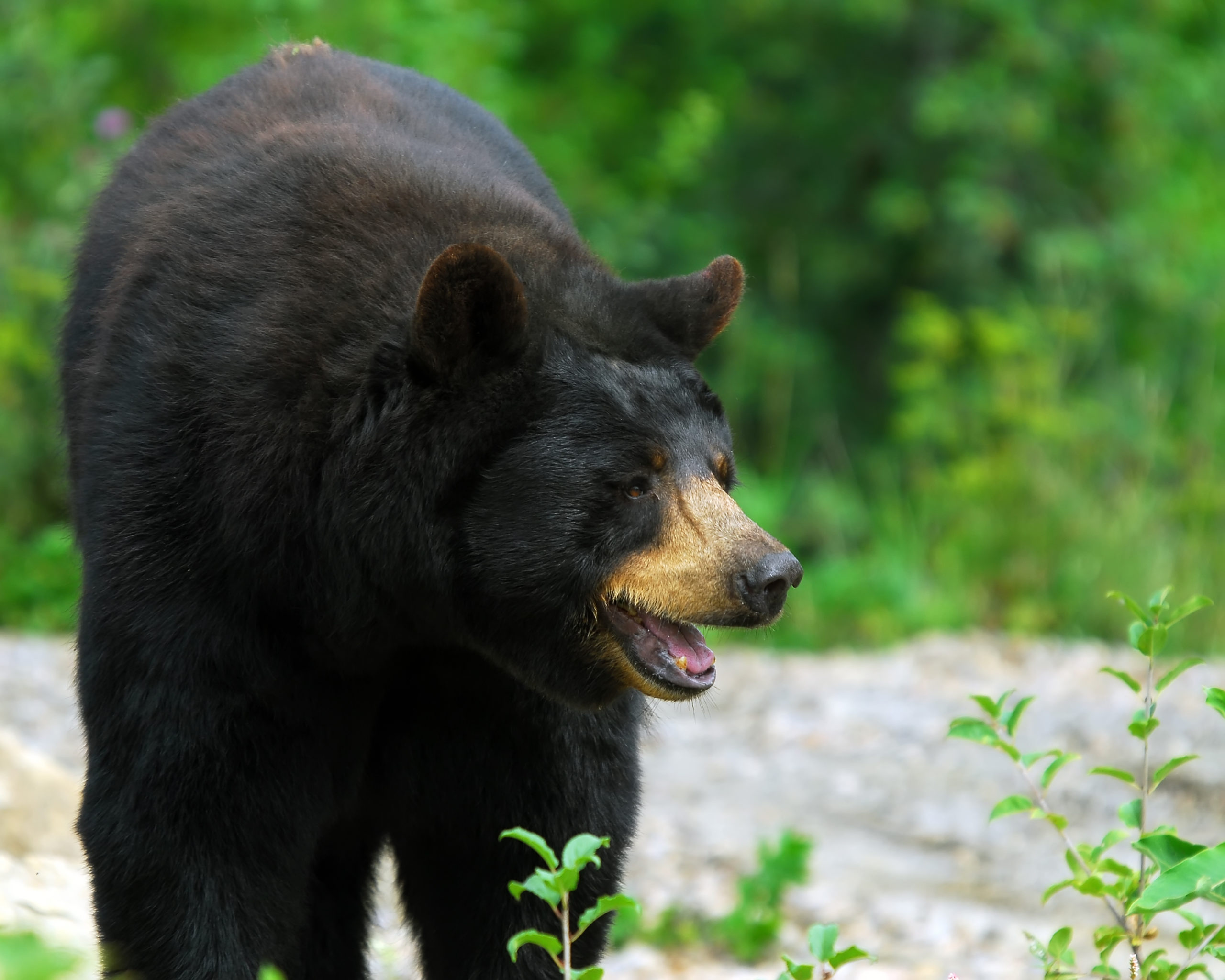
A black bear in it's natural environment
Outside of most western states, most bear hunts, both spring and fall rely on baiting to pull a hungry bruin to within range of a tree stand or ground blind. Most black bear hunting is done over bait this time of year. Selecting a bait site is not too dissimilar from selecting a stand for a deer hunt. You're going to want to do some scouting to look for scat, tracks and claw marks. Once you find some sign, set up some trail cameras to see how many bears are in the area and the times they are visiting.
Now that you have a bait site selected, it's time to gather the materials. It's important to check your state's regulations regarding bear bait. Some are very picky about what they'll allow you to use. For instance, a few states ban the use of chocolate as a bait material. Generally, people like to use donuts, fish and grease. The smellier the bait, the more effective it will be. Many bears have a sweet tooth, so think of sugary items. Something like anise oil or vanilla extract will also help to get a bruin's attention.
One thing to keep in mind with hunting bears over bait is that you don't want to make it easy for them. Otherwise they'll come in, fill their bellies quickly and move on. You want to keep them in the area for a long period of time. That's why most hunters use large barrels with a hole cut in the side. Think of it like those treat balls you can buy for dogs at the pet store. The bear will have to roll and manipulate the barrel to get the treats to come out. The longer they do that, the more time they'll stay on site and thus, the more shot opportunities you'll get.
A good spring black bear site will get the animal to throw caution to the wind and he'll be so focused, he won't even realize you're there. That gives bowhunters more time to line up a good broadside shot. Because shot placement on bears is critical. Set up your tree stand or ground blind at the same time you establish the bait site. Have the shooting lanes cut and ready to go before you head out because most bears are quite sensitive to change, especially on public land.
Bears are creatures of habit, so once your bait site is established, stick with a strict routine every time you visit the site. Put the bait out in the same order every time. Make the same noises every time. It won't take long for the bears to associate the sound of your visits with something akin to a dinner bell ringing!
By the time you are ready to hunt the bait site, your target animal should be settled into a predictable routine and they'll never expect you to be there.
The importance of scent control
As a final thought on spring bear hunting, let's talk about scent control. Many newer bear hunters disregard just how much impact human odor has on these animals. Most hunters associate serious scent control with whitetail deer hunting, but a bear has an even better nose than a deer. When a hunter is sloppy with their scent, a bear is going to know about it. If anything, you should take even more scent precautions with bears than you do with other game animals.
Wash your clothing with scent-killing detergent. Keep your hunting clothing in sealed bags on your way to the spot. Bring along some sort of cover scent to spray and help mask any odors once you're in your spot. Many companies now make electronic scent eliminators to help hide a human's presence and they're not a bad idea for bear season.
Keep scent control in mind when selecting your bait site and when setting up your treestand. Ideally, you want the winds to carry the scent of your bait a long distance, but you also need to setup in a way that keeps the animal from smelling you. This is why setups for bear hunting can sometimes be much trickier than ones for deer.
Good luck to all the bear hunters heading out for the first time this spring. Don't forget to check out our archery shot placement guide for some helpful tips on where to aim when that big bruin finally gets within range this year!
For more outdoor content from Travis Smola, be sure to follow him on Twitter and check out his YouTube channel.
NEXT: BEAR ARCHERY INTRODUCES PERFECT INTERMEDIATE BOW
WATCH
